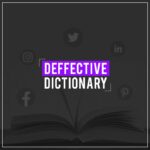
Digital Marketing v/s Traditional Marketing
Digital marketing refers to marketing on digital platforms that includes email, social media, as well as other internet platforms. There is a misconception that digital platforms proliferated during the pandemic. In reality, it was just a wake-up call that insisted on a shift to digital platforms that were getting the sore exposure while benefiting from customer engagement and sales.
Traditional marketing refers to any type of marketing that isn’t online. This covers print, broadcast, phone, direct mail, and outdoor advertising like billboards. From newspapers to radio, this type of marketing helps reach targeted audiences.
How digital marketing outraced traditional marketing with stats
Performance marketing is a major reason why digital marketing is leading when compared to traditional marketing. As the world was suffering from the pandemic, businesses were staggering to retain their customers & maintain their online presence too, and some just emerged into the online space to root their identity.
Check out these graphs that explain the numbers:
- 79% of households read or scan direct mail ads.
- 39% of customers try a business for the first time because of direct mail advertising.
- 56% of customers trust print marketing.
- 44% of customers respond to direct mail marketing by clicking on the brand’s website
These strategies are popular in today’s times because of the internet and mobile devices that everyone has easy exposure to. The cordless connectivity and integrated technology that smartphones offer have made social media more convenient than ever. According to DataReportal, there are 4.95 billion active internet users in the world and 4.62 billion active social media users. With numbers that high, businesses are encouraged to move to online marketing.
Apart from being costly, Traditional marketing provides lesser interaction with your audience which keeps you from gauging your audience engagement.
While Traditional marketing does allow you to broadcast a message to a targeted audience (mailers by zip code, print publications by industry or interest, etc.), people read their mail before tossing it into the recycling bin. Many experts think traditional marketing is high-risk and low-reward.
Types of Digital Marketing
Here are a few ways of Digital Marketing to choose from:
Affiliate Marketing – This is where an influencer or a third party generates content to engage the audience in buying the product or following the brand if that’s the end goal.
Social Media Marketing – This covers the whole online marketing aspect as it overlooks all the platforms and mediums involved in online marketing.
Content Marketing – This is the type of marketing that involves making content in the form of blogs, newsletters, white papers, social media posts, emails, videos, and the like—to current and potential customers.
Email Marketing – Email Marketing is when your content is required to be marketed through cold emailing.
SEO – This is the kind of marketing used to boost and optimize your content on social media with the use of SEO analytics.
PPC – Pay Per Click in marketing is when the advertiser pays for a sponsored ad only when it’s clicked.
Inbound Marketing – Inbound marketing caters to the needs that the people already have as opposed to outbound marketing.
Online PR – Potential and current customers in the public realm are targeted to find a broader marketing outreach.
Pros
- Data and audience involvement can be tracked instantly. On social media, you can track the ad insights and know when someone clicks on a link to your website, reads an email or follows you on social media. Numerous insights can be drawn from this data. You can include the type of content that works best for a specific audience, which mediums are the most effective, and what time of day receives the best engagement.
- Digital marketing strategies incur a much lower cost. Sending out an email campaign can save a lot of money compared to printing individual postcards and paying for postage on each postcard.
- The broad reach of digital marketing makes for a broader reach of audience.
Cons
- Some internet users have adblockers to prevent ad pop-ups. Other times, ads can be skipped or removed if a user pays for premium services (e.g., Spotify, Hulu, Twitch).
- Digital tactics need to be evaluated for maintaining effective engagement on social media. What works well one day may be irrelevant the next day. However, this can be combatted with a strong foundation in digital marketing basics.
With the pandemic set in motion in 2019, the need for an online presence became more prominent because online was the only way of marketing products in a confined controlled environment.
The COVID-19 Pandemic has blindsided many businesses and with very good reason. Amidst the chaos and uncertainty, only the flexible has the surest hope for survival.
Social media marketing plays a key role in the successful implementation of business response in the confined COVID climate.
Now is the time to shoot up social media efforts in the following ways:
- Launching a new service to respond to the changing environment. E.g., online shopping or delivery.
- Using social media to increase engagement and build a strong online brand community while your business is in hibernation.
- Plan your relaunch to be ready for the next lockdown crisis.
Conclusion
-
Content that rocks the world
06 November, 2020 -
Design: Bringing Ideas to Life
12 November, 2020 -
Whassup Bud: One of Budweisers’ Evergreen Television Ad Campaign
20 November, 2020 -
Brands must be Gods
27 November, 2020 -
The Deffective Dictionary
08 January, 2021





